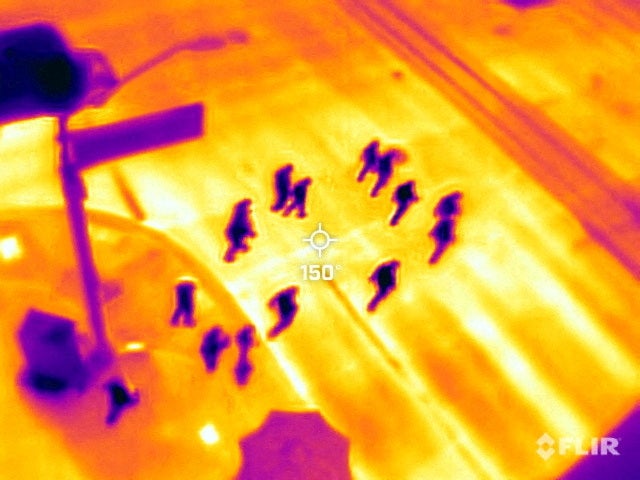America’s extreme 60C weather captured by heat camera
Phoenix, Arizona’s record-breaking heatwave lasted 31 days over summer – a startling milestone for the desert metropolis

As the world registered the hottest month of all time in July, the southwestern US city of Phoenix shattered its own 1974 heatwave record, with temperatures above 110 degrees Fahrenheit (43C) for 31 straight days.
Heat-sensitive photography in late July reveals an even hotter Phoenix, where concrete on the street registers 150F (66C), outdoor workers’ bodies reach 105F (41C) and homeless people swelter, surrounded by surfaces as hot as 143F (62C).
Before 10am at one of the city’s favourite sites – the Desert Botanical Garden – the thermometer is already at 111F (44C), but a saguaro cactus records a surface temperature of 120F (49C). A man walks on a road with no shirt and a bottle of water. The camera puts his temperature at 105F.
Reuters photographer Carlos Barria spent three days in Phoenix with his FLIR (Forward Looking InfraRed) camera, which captures the surface temperature of people and landscapes, and revealed how temperatures rose to dangerously high levels.
All daily temperature readings in this article were taken from the National Weather Service.
The summer monsoon rains that historically help Phoenix residents and the vegetation cool down have been scant this year and even the cacti have started to collapse.
Health workers say hospitals have been inundated with patients suffering from heatstroke, sometimes life-threatening.
“We’ve had patients that are 111 degrees. Your brain cannot handle that that long,” said Dr Frank LoVecchio of Valleywise Health in Phoenix.
At noon, the record temperature is 109F but the surface temperature is a furnace-like 150F.
Phoenix, the capital of Arizona, is now a city of 1.6 million, the fifth most populous in the United States. It sprang to life over 150 years ago with the arrival of the pioneers, who built irrigation canals to make the land fertile.
Despite its location in the Sonoran Desert – which stretches across the US southwest and into northern Mexico – Phoenix has become a favorite place for retirees, attracted by year-round sun and its ochre mountain backdrop.
Maricopa County, where Phoenix is located, reported 39 confirmed heat-associated deaths by the end of July, with over 300 more under investigation to determine if they were caused by heat.
Photography by Carlos Barria
Reuters
Subscribe to Independent Premium to bookmark this article
Want to bookmark your favourite articles and stories to read or reference later? Start your Independent Premium subscription today.

Join our commenting forum
Join thought-provoking conversations, follow other Independent readers and see their replies